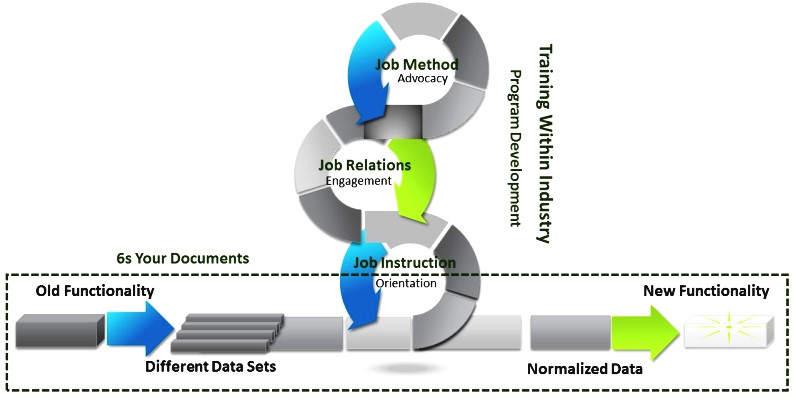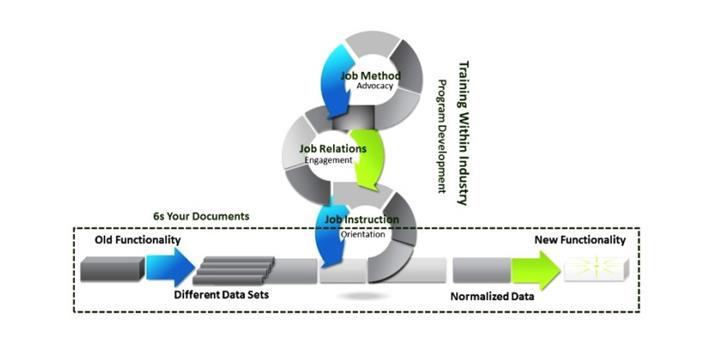I use a foundation of Training within Industry (people side) and the 6s approach (Data side) to implement an onboarding program. It is usually based on a 90 to 100-day cycle. An outline of the process is depicted below.

5s is a systematic corrective action technique to clean up, get organized and make this the way you do business. 5s stands for Sort, Set in order, Shine, Standardize, and Sustain. 5s was popularized by quality professionals to organize their workplace, predominantly in the manufacturing industry. It is a simple concept and can be symbolized by the outline of a tool on a wall where that tool should be placed when not in use.
This simplicity is often hidden in digital work, 5s can serve a handy tool for efficient data management of files and folders created and stored by organizations. Recently Safety has been added to make the 5s procedure 6s. In document management, I recommend that Security (Trust) be used in lieu of Safety.
The 6s process should not be viewed as housekeeping rather as an integrated approach for productivity and security improvement. Arguably, 6s could provide the basis for your document management system. An outline on 6s applied to cloud-based documentation:
The bulk of the 5s outline below was paraphrased from a blog post, Use 5S to organize data space in your computer written by Ponmurugarajan (Rajan) Thiyagarajan, Consultant at Tata Consultancy Services Limited and Senior Member of American Society for Quality.
Sort: Create folders and sub-folders to organize important data. Name folders and files appropriately for easy retrieval. Create one folder to store temporary data. Clear the contents of your Temp folder regularly, if possible, on a daily basis.
Set in Order: Ensure easy retrieval of data by viewing and by search. Create only 2 main folders – one for storing data for frequent use and the other for rare use. Create multiple sub-folders to store a particular type of data. Limit sub-folders at the next 2 sub-levels to less than 5. Create searchable documents by tags.
Shine: Manage data folders like you would any tool in the manufacturing facility. Allow for preventative maintenance review of folders on items such as revision requests, missing documents, and general use and access rights. Make sure proper back-up procedures are installed.
Security: Set use permissions across all folders on as needed basis to include the additions, changing and importing and exporting of documents for internal and external purposes.
Standardize: Integrate storage, retrieval and clean up tasks to create a unified process. Create a policy to follow the procedures discussed in Sort, Set in Order and Shine. Create a version controlled process document that details naming, structuring and maintenance schedule of files and folders which can serve as a reference document.
Sustain: Track and monitor for adherence to the above. Conduct monthly audits to ensure that the set procedures are followed diligently. Document and publish the disk space usage data on a weekly basis.
Many organizations will complete a 6 process without doing Standardize and Sustain. It is the act of Standardization that drives Sustainability. Without these components, the gains that you create in the first three will be lost. When a 6s system is implemented, it creates a visual workplace that allows for quick determination of current state.
In many document management system, visual indicators are often non-existent. As Dr. Gwendolyn Galsworth said in a podcast to me, “If you are not visual, you are not Lean.” At a glance, we should be able to determine the structure and path needed to find the needed information. I often recommend implementing 6s prior to proceeding with other components of data management and especially for customer facing documents in an onboarding process. .

